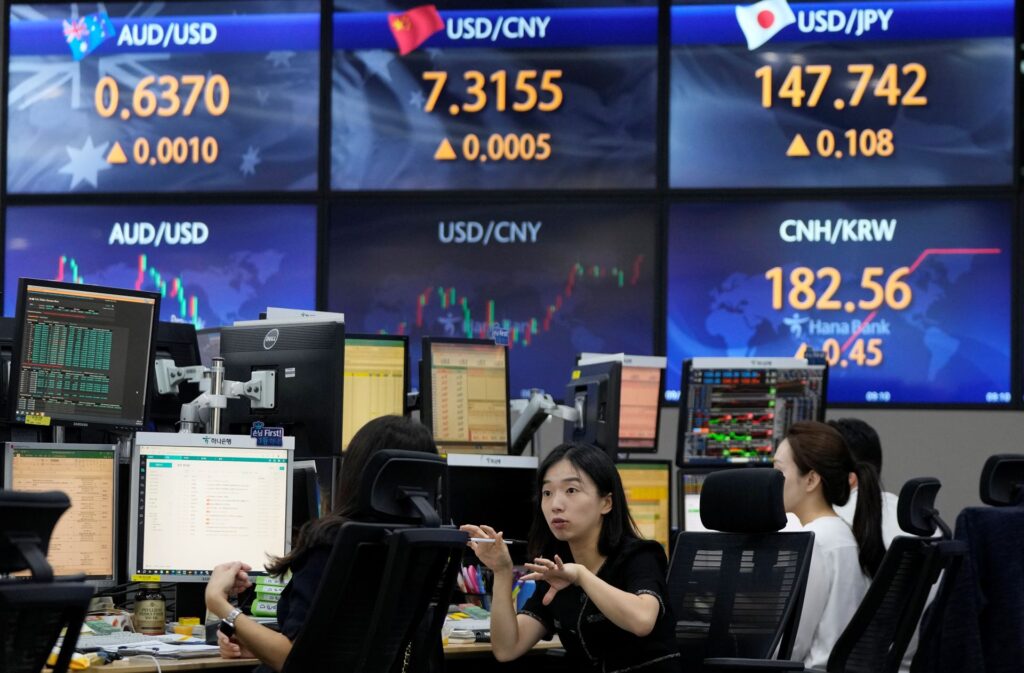Asia-Pacific markets largely experienced an upswing on Tuesday, buoyed by South Korea’s latest inflation data, which showed a significant easing in consumer prices. Investors across the region are closely monitoring these developments as they assess the broader implications for economic policy and market performance.
In a promising sign for the South Korean economy, the Consumer Price Index (CPI) for August recorded a year-on-year increase of just 2%, marking the lowest inflation rate the country has seen since March 2021. This deceleration in inflation comes as a relief to both policymakers and market participants, indicating a potential stabilization of prices after months of volatility. The August figure represents a notable decline from July’s 2.6% rise, aligning closely with the expectations of economists surveyed by Reuters.
On a month-on-month basis, South Korea’s CPI rose by 0.4%, slightly outpacing the 0.3% increase predicted by Reuters’ polling. While this marginal uptick suggests that some price pressures remain, the overall trend points to a cooling of inflationary forces, which could influence the Bank of Korea’s future monetary policy decisions.
The response in the equity markets was generally positive, with major indices across the Asia-Pacific region reflecting investor optimism. In Japan, the Nikkei 225 advanced by 0.18% during early trading hours, supported by gains in key sectors. The broader Topix index also saw a rise of 0.38%, indicating widespread market confidence.
South Korea’s Kospi index edged up by 0.17%, continuing its upward trajectory, while the Kosdaq, which focuses on smaller-cap companies, saw a modest increase of 0.02%. These movements suggest a cautious optimism among investors, who are likely weighing the implications of the inflation data on the broader economic outlook.
However, not all markets shared in the gains. Australia’s S&P/ASX 200 index fell by 0.39%, reflecting a more subdued sentiment in the region. The decline could be attributed to various factors, including sector-specific challenges and broader concerns about global economic conditions.
In mainland China, futures for the CSI 300 index, which tracks the performance of the top 300 stocks listed in Shanghai and Shenzhen, were mostly flat at 3,265.4. This stability follows a seven-month low reached on Monday, driven largely by continued weakness in the real estate sector, which remains a significant drag on the Chinese economy.
Meanwhile, Hong Kong’s Hang Seng index futures were slightly down, trading at 17,671, compared to the previous close of 17,691.97. The Hong Kong market has been grappling with its own set of challenges, including geopolitical tensions and concerns over the city’s economic resilience in the face of ongoing global uncertainties.
Across the Pacific, U.S. markets were closed on Monday in observance of the Labor Day holiday. However, futures tied to the major U.S. indices pointed to a softer opening on Tuesday. The Dow Jones Industrial Average futures slipped by 57 points, or 0.14%, while S&P 500 futures fell by 0.12%. Nasdaq-100 futures, which are heavily weighted towards technology stocks, declined by 0.26%, signaling a cautious start to the U.S. trading week.
As investors in the Asia-Pacific region continue to digest the latest inflation data and its potential impact on monetary policy, the overall mood appears cautiously optimistic. The coming days will likely see further analysis and reaction as global markets resume full operations, with attention particularly focused on any signals from central banks regarding their next moves in the ongoing battle against inflation.





